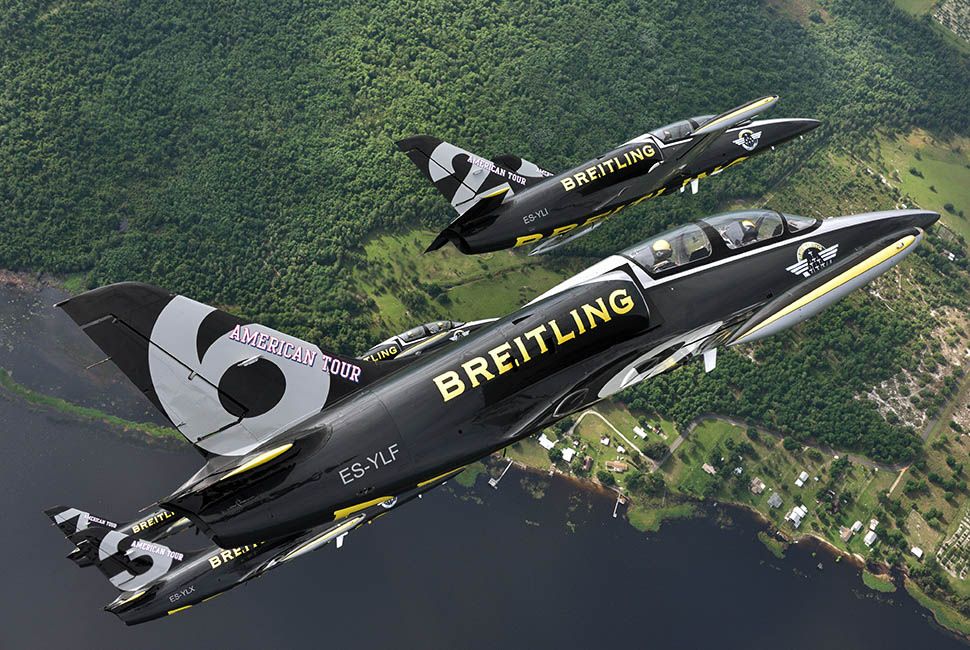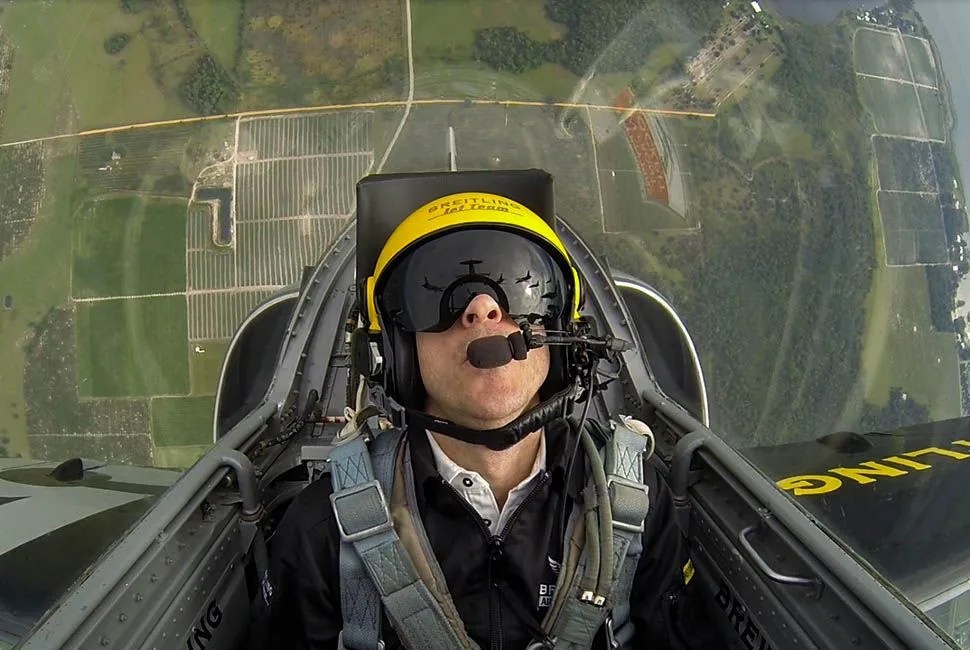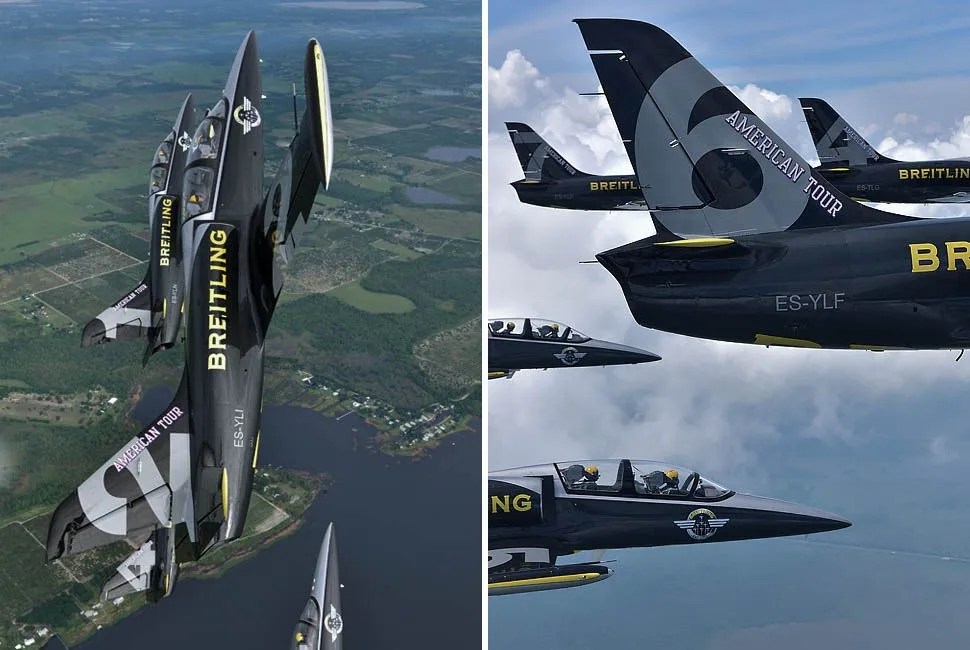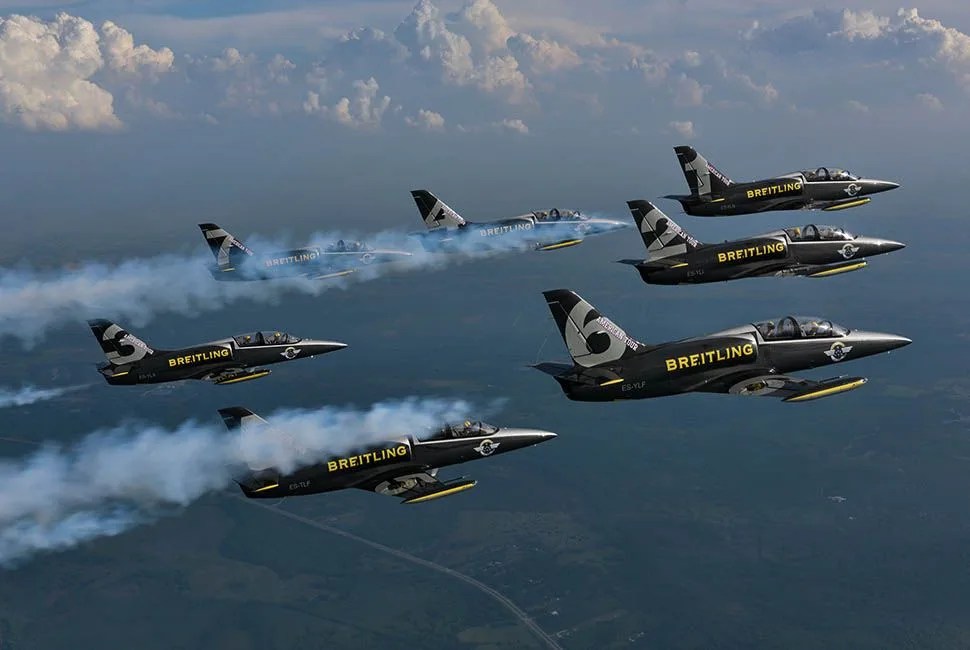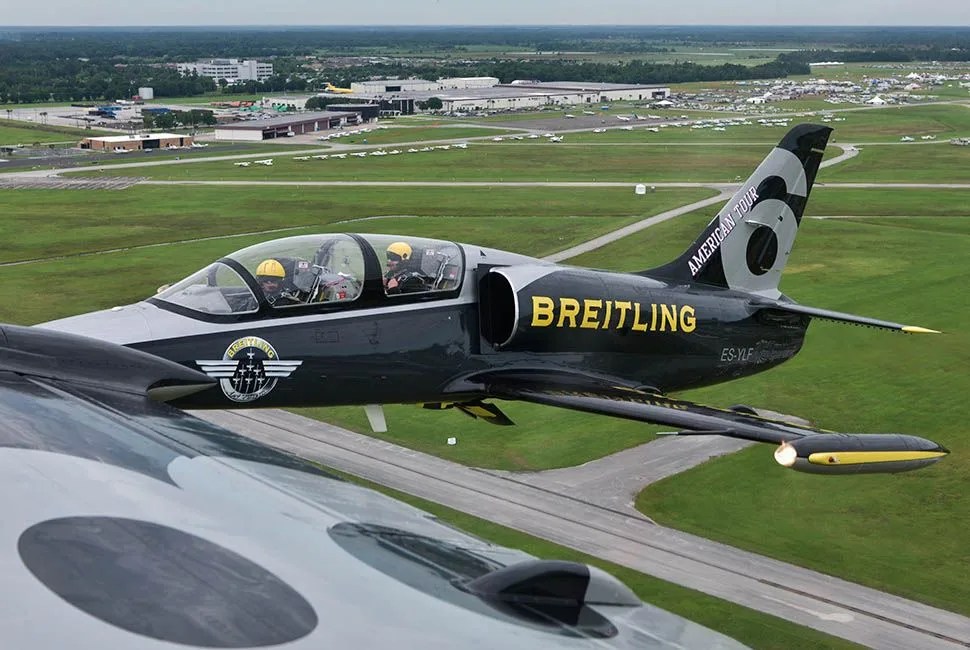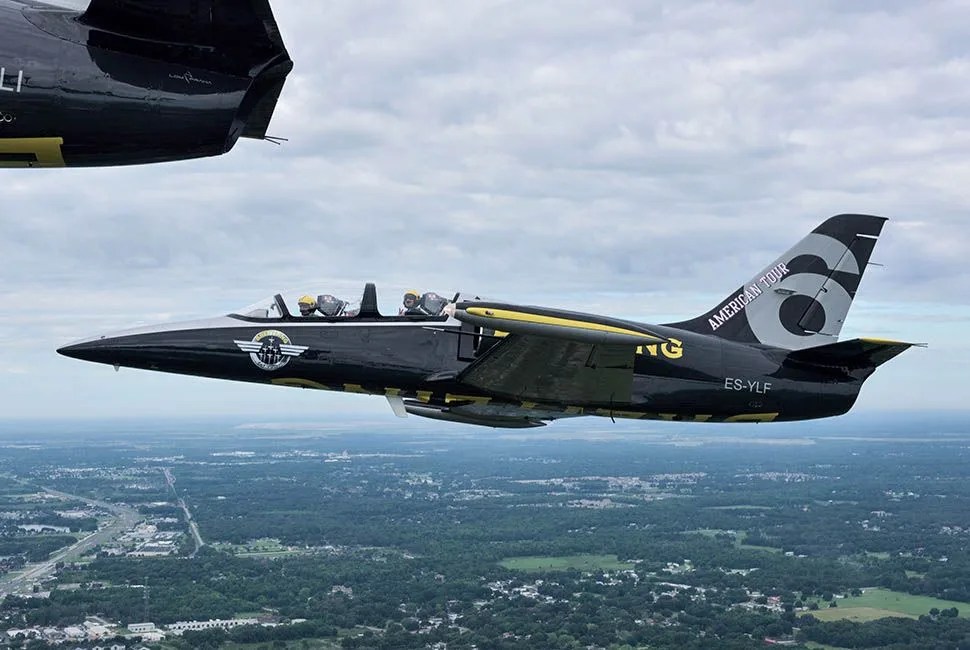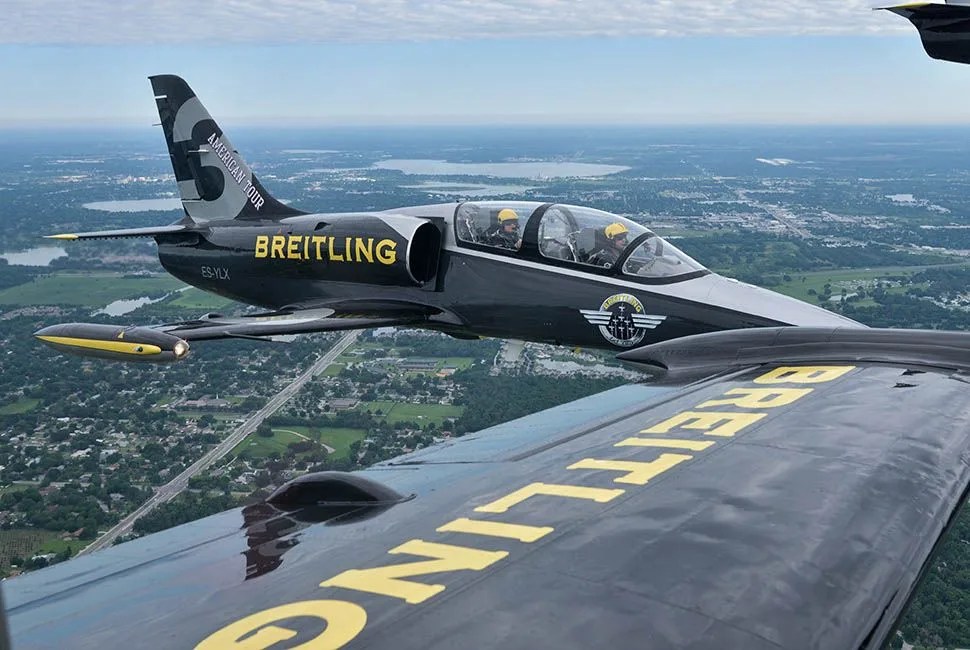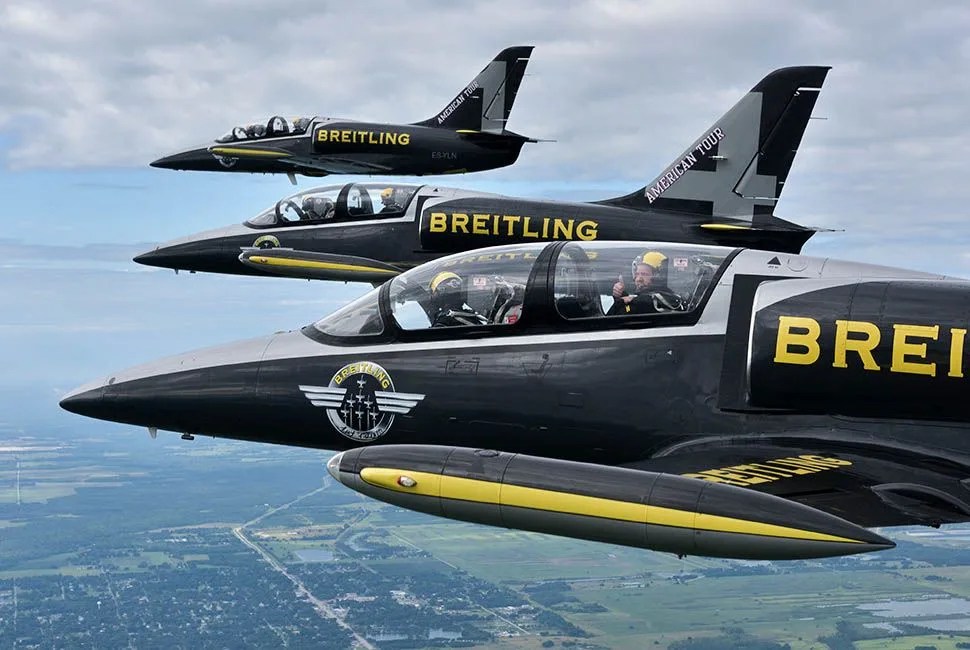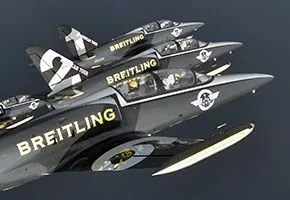8 photos
Accelerating through 120 knots (138 mph), the nose of the L-39C Albatros rotates smartly on takeoff. Two seconds later, we’re airborne with landing gear and flaps coming up, climbing for a target just a couple hundred yards ahead and less than 50 feet above.
At 200 knots (230 mph), in a shallow climb, the letters B-R-E-I-T-L-I-N-G come into brilliant focus just above the canopy, drawing ever closer. I smile from ear to ear as pilot Georges-Eric Castaing maneuvers us smoothly into position. Our jet (number 5) occupies the second “slot” position of the seven-jet formation.
Picture an arrowhead with Breitling jet number 1 at the tip of the arrow. Jets 4 and 2 flank jet 1, stepped down to the left and right. Jets 7 and 6 occupy the same positions on jets 4 and 2, forming the wedge of the arrowhead. Jets 3 and 5 are wingtip to wingtip, their noses “slotted” into place below the tails of 4 and 2, and under the right and left wings of 7 and 6 at the rear of the formation.
45 degrees to our right, just a few feet above (nearly close enough to touch) is Paco Wallaert flying number 6. Directly above and just ahead, Bernard Charbonnel is in number 2. On our left wing is Christophe Deketelaere in number 3. Leader Jacques Bothelin in number 1 is further above and ahead but still unbelievably close, flanked by Francios Ponsot in number 4 and Patrick Marchand in number 7.
At this point, there’s nothing else to do but cue the mic and say to Castaing (call sign “Georgio”): “This is fucking fantastic!”
We’re in the air with the Breitling Jet Team (BJT) 6,000 feet over the intensely green central Florida highlands, heading southeast to a maneuvering area.

